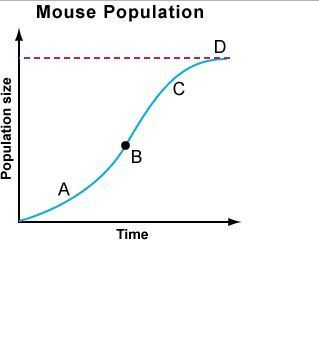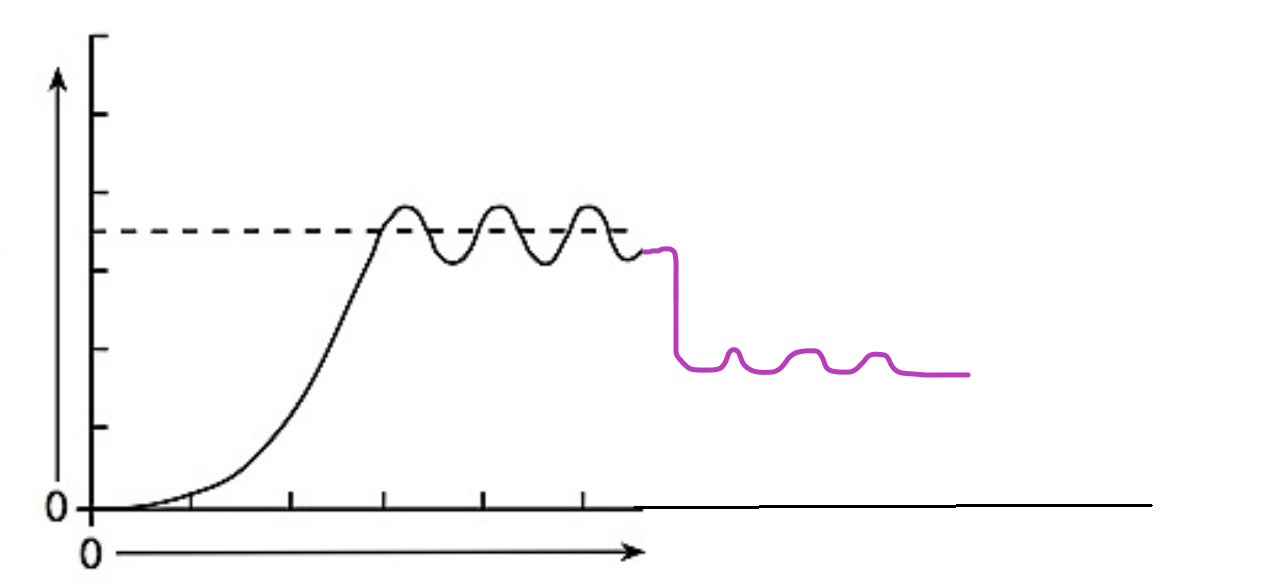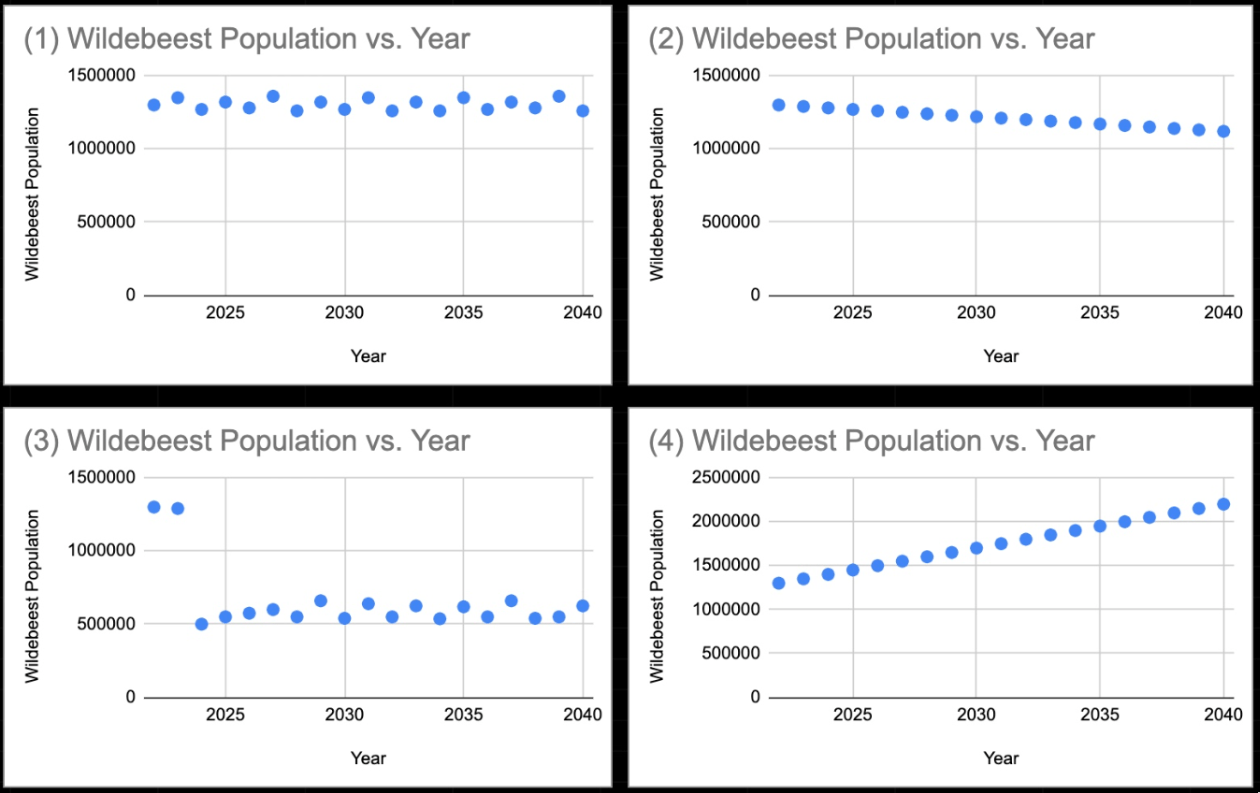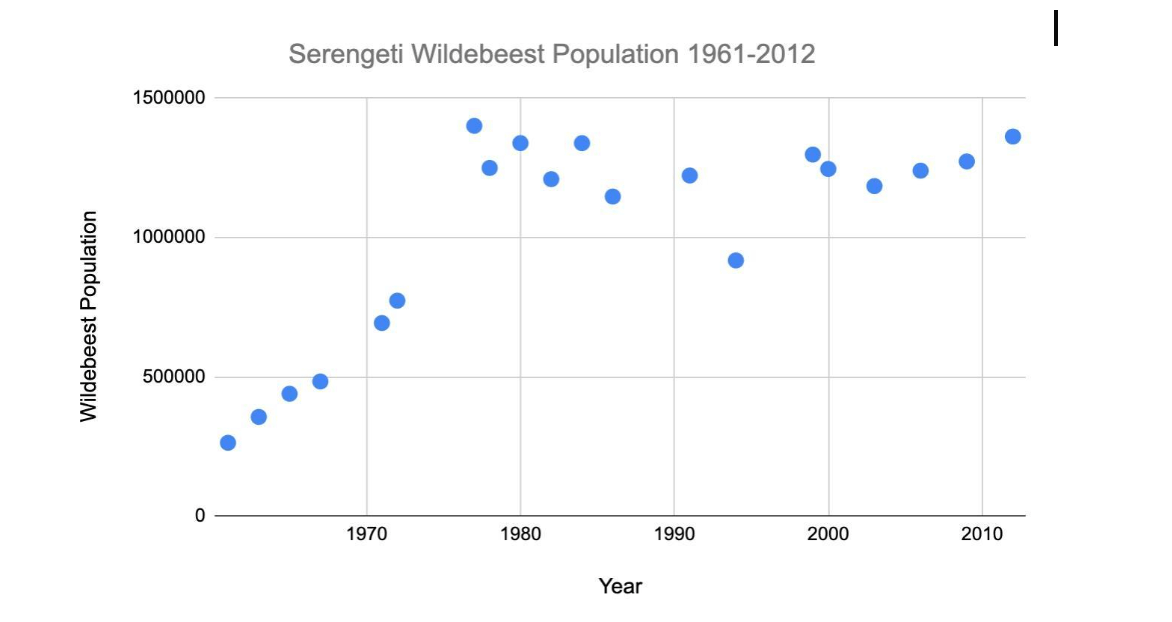Define limiting factors
Something that limits the population of a species from growing in an ecosystem
What do we call the dotted line labeled "D."

Carrying Capacity
What animal species migrate year-round?
Wildebeest
What is an ecosystem?
A community of living organisms (plants, animals, microbes) interacting with each other and their non-living physical environment within a particular area.
Define migration
Seasonal movement of animals from one region to another.
What are 3 examples of limiting factors
Food, weather, predators, disease
Define Carrying Capacity
The number of population the area can support.
True or False
Wildebeest are the keystone species of the Serengeti.
True
Define keystone species
A species that plays a critical role in an ecosystem and influences the abundance and type of other species in the habitat.
Define the rate of change.
A. How much a population increases
B. The population number in an ecosystem
C. The difference in population between a period of time.
D. The numbers between predator and prey in an ecosytem
C. The difference in population between a period of time.
If a disease destroying barley plants swept through an ecosystem, what would happen to the bird population that eats barley plants?
A. The bird population would stay the same
B. The bird population would infinitely increase
C. The bird population would decrease
C. The bird population would decrease
What determines the carrying capacity?
limiting factors
What are 2 living and non-living components in the Serengeti
Living: wildebeest, zebra, butterfly, lions, elephants
Non-living: lake, liver, savanna, grassland
Explain why humans create reserves/conservation parks.
A. Increase biodiversity in the city
B. to protect animal populations from extinction
C. Maintain human resources
D. Animal cruelty strikes are common
B. to protect animal populations from extinction
What is the rate of change equation?

In a forest ecosystem, which of the following is the best example of a limiting factor for a rabbit population?
A. the robin (bird) population
B. amount of grass/flowers available
C. the amount of sunlight
D. rabbits have no limiting factors
B. amount of grass/flowers available
Which of the following might cause the carrying capacity of this rabbit population to DECREASE?
A. increase in food for a few years
B. fewer predators
C. harsh winters for a few years
D. more resources available in the ecosystem

C. harsh winters for a few years
A. Small African tribes
B. Europeans
C. Americans
D. Maswa game reserve rangers
B. Europeans
In an ecosystem, what can cause a decrease in a population?
Predation, lack of food supply/habitat, deforestation
They predict that the population will fluctuate around this number if conditions in the ecosystem stay the same. Which of the following graphs represents the most likely outcome for these animals if the park's total area decreased and all other system components stayed the same?

Graph 3
Why are all limiting factors necessary in an ecosystem, AND what would happen if there were no limiting factors?
Limiting factors prevent the carrying capacity from being exceeded. Without limiting factors, overpopulation could occur, which could decrease the necessary resources.
What is the carrying capacity of rabbits that can survive in this ecosystem after the harsh winter? How is this different than before the severe winter?

The carrying capacity is about 340 rabbits. Due to limiting factors, about 80 fewer rabbits could be expected in this ecosystem.
Label the wildebeest migration pattern on the map below. Identify 2 of the reasons why they are constantly moving.

Food and Predators.
True or False: If two species compete for the same resources (eat the same food, live in the same area, etc.), then they will each have lower carrying capacities compared to if they lived alone.
True
Find the rate of change between 1972 and 2012 (Use table on the board and graph below to help)

14,713.35